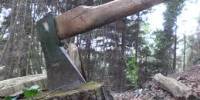Statement of the problem
Training makes a man competent to do a job. Training is a systematic process. Teacher training is to learn how to conduct teaching on the basis of fixed objectives, following appropriate techniques. By training a teacher can successfully run his / her teaching learning according to curriculum and syllabus. At the same time one can gain experience how to evaluate a lesson. Not only that training also provides leadership quality and personality, which are necessary for professional improvement. In a nutshell there is no alternative of training for a good teacher. Training is essential for quality education. In this backdrop, to study the present teacher training system of PE is very much logical.
Objectives of the study
The main objectives of the study are as follows:
To explain the mode of delivery of primary teacher training.
To know the present situation / status of primary school teachers training system.
To make recommendations for improvement of primary school teachers training system
To identify the constraints of the effective training system
Scope of the term paper
The scope of the study is ranged within different types of primary school teacher. These trainings are C-in-Ed subject based training and sub cluster training.
Research method
As social study I have used some methods of research particularly both primary and secondary sources of data reports, manuals, training guidelines, policy of training have been consulted as secondary source of data. Discussion, interview, observation and visit have been used as methods of collecting of data. I have consulted some reports submitted by previous participations. Some times I have collected information from daily news papers. I have specially used some Bengali papers and magazines.
Working definition
Face to face group-Groups of people in which social relationship are direct. Also used in sense of primary groups.
Academic Staff
School, college or university staff with teaching responsibilities as opposed to administrative responsibilities.
Cluster
A group of classes within a school that are associated for instruction or administrative purpose.
Learner
Any person who joins or receives knowledge, instruction or skill at the learning centre or by the instructor.
Instructor
One who gives instructor con industrial training or workshop training.
Training
Systematic practice in the performance of a skill.
Literature Review
It is not an easy task to prepare a term paper A Study on “Training system for teachers of primary education in Bangladesh: I depended much on some literatures available at NAEM library to find guidelines. Training manual for primary level subject teachers curriculum and syllabus of C-in-ED courses helped me much in this regard. Few other literatures like “Management of Education” and “Dictionary of Primary Education” were also very helpful for this research.
Despite inability to collect relevant data and information regarding PE training system I had to explore both formal and informal sources of dependable information in for of formal areas of information I have consulted different reports on training manuals and other papers, specially reports on training, articles on training and some have magazines helped me enormously.
Informally my personal experience as an assistant teachers of PE school, observation of different types of professional behaviorism of my colleagues and continuous queering behaviors of my students have enriched my way of thinking about primary school system.
Besides, most of the members (parents, guardians caretakers, teachers) of our society are very critical about the defects of primary training system. A part from this our newspaper are the great source of information and evaluation of teacher primary training system in Bangladesh. In view of all I have formulated my conception towards preparation of this term paper.
Limitations of the study
Due to time constraint I was not able to enrich the study providing more information and guideline During the FTC a participant I am not allowed to work outside to conduct survey for a long time. Besides, preparing a term paper is one of the many activities during this period. Therefore, it was not possible on my part to pay full attention to this research work. So the study naturally has many limitations and these are as follow:
- The books that are available at NAEM are not sufficient.
- The study is confined only to the teachers of school teacher i.e. primary education.
- Due to shortage of the time in the on going training schedule.
- Most of the activities have been rationing of teem.
Present Status of C-in-Ed Training
Certificate in Education (c-in- ED) is a compulsory one-year teachers training programme for all primary school teachers. Previously it was a pre-service training. One who wished to become a primary school teacher could participate in this training programme. After completing C-in-Ed training one could apply for primary school teaching. So it was a pre requisite for primary school teacher. So any one who is a SSC graduate could take part in C-in-Ed training programme. But now is in service training programme. After getting appointment as a primary school teacher one is to go for one year C-in-ED training to a near by Primary Training Institution (PTI).
List of Primary Training Institute
Table-
| Institution | Government | Non Government | Total |
| PTI | 54 | 03 | 57 |
There are 57 P.T.I.s in Bangladesh, Among them 54 are owned by the government and 3 are privately run Divisional Director (D.D) and Director of Primary Education (DPE) looks after the administrative matter of the P.T.I’s. Academics activates of P.T.I’s are controlled by the National Academy for Primary Education (NAPE). DPE deals with the appointment and transfer of the P.T.I personnel On the other had NAPE prepare and design curriculum training materials and monitor the implementation of curriculum at P.T.I’s.
Staffing pattern of a PTI
| Designation | Number of post |
| Superintendent | 1 |
| Assist. Superintendent | 1 |
| Instructor | 12 |
| Teachers of Experimental school | 5 |
| Asst. Liberian cum cataloger | 1 |
| Office staff | 3 |
| M.L.SS | 6 |
| Total | 29 |
Superintendent is the administrative and academic head of the PTI. Under whom twelve instructors conducts the training activities. An experimental school (up to grade 5) is attached to a PTI. Five highly qualified teachers are there.
Mode of delivery of C-in-ED Training
There are eighteen subjects are taught in one year C-in-Ed programmeme
- Primary education: Introductory ideas.
- Importance of primary education: Primary education in other countries.
- Primary education is Bangladesh: Primarily strategies and organization.
- Child psychology
- Teaching methods
- Learning and evaluation of personality development
- Mother tongue Bangle
- English
- Mathematics
- Environment and society
- Islamic studies
- Hindu Religion
- Christian religion
- Buddhist religion
- Physical education
- Art and craft
- Environment and science
- Music
These subjects are clustered in module; the modules are: art foundation school, subject’s practice teaching and incidental activities. In total 200 marks are allocated for these four modules. Currently C-in-Ed training is delivered in two shifts. The first shift starts from July and ends in next June, while the second shift starts from January and last till December of this year. The training activities of first shift begin early approach. One is face-to-face training and another is teaching practice. Face to face training occupies three fourth of the total training programmeme. The three months practices teaching implemented is attached with experimental school and nearby selected primary school. In the face to dace period trains are taught in the training room by respective institurctor.
Instructors Training classes are supposed to run through activity based programmeme. In every subject there are two parts again. One is theoretical and another is practical. In face-to-face training the trainees get oriented about the theory as well as they got practical experience by doing things on their own. For example they prepare teaching materials, lesson plan etc. What the trainees in face to face period learn they practices all this in teaching practice priod at the schools. In teaching practice a trainee has to produce 80-120 lesson plan and implement at the classroom under the guidance of instructors. The trainees are to prepare and collect the appropriate teaching aids for the lesson and they are to implement the lesson using these teaching aids and following the proper techniques. The instructors are to supervise the trainee’s lessons regularly and give feed back so that the trainees can have experience of proper methods and techniques of imparting teaching.
The trainee’s achievement is assessed in two modes. One is internal and another is external. This is true for both face-to-face training and practice teaching. The PTI authority runs the internal assessment, twice an academic year. Thus assessment is mainly paper pencil test. The instructors prepare the question papers and the PTI instructors evaluate the answer scripts as well. The internal assessment is done by the Certificate in Education Board (C-in-ED). Director General, NAPE is the chairman of C-in-ED Board like the face to face training programme assessment of practice teaching is done by internally and externally PTI super and instructors conduct internal assessment while external assessment of learning practice is done by superintendent by the C-in –ED Board. After the successful completion of both internal and external tests, the C-in-ED Board awards certificates among the trainees.
Constraints of C-in-ED programme
The C-in ED training programme is designed to make the primary School teachers skilled and committed in classroom teaching. But different stakeholder group has expressed concerns whether the C-in –ED programmeme is adequate to serve its purpose. Because of various constant in is many aspects C-in ED training programme has not been proved as constraint to create skilled and motivated teachers. The constraints are given below in bullet point:
- The member of trainees is too high in a shift for quality training. Currently the PTI’s are instructed to enroll two hundred trainees is a shift. But the average number of instructor is PTI is 17-7 out of 12 (Source DPE, Dhaka). Science all PTI’S have to run two shifts, these seven instructors are to conduct training activities of 400 trainees at a time. At the same time they have to supervise practice teaching at the school. So instructors are overloaded with their work. They cannot run the training is at this quality of training programme is being hampered.
- In most cases the instructors run the training classes in lecture method. This is for two reasons. One is the number of trainees is use and another is instructors are not commuted an is same cases not well trained to run their in activity base and participatory manner.
- The C-in Ed training programme is fully residential but in all P.T.I’s residential facilities are not provided for 400 trainees. So the trainees have to stay outside of the PTI in private houses. Because of this the trainees could not attend all the training activities in time.
- The assessment procedure is not appropriate for the adult learner. The assessment is mainly dominated by paper pencil tests. There is little scope for addressing the performance of the trainee teacher. The curriculum is too long for a schoolteacher and loaded with content. Some contents are not relevant to classroom teaching.
- There is no follow up system of the C-in Ed training.
- The PTI instructors are fastened with their job. Because there is no regular promotion system in their job. In many cases the instructors starts and end their job in the same position. So the instructors are not motivated enough to impart quality training.
Subject based Training
Present status of subject based Training:
Subject based training is one of the short course training for the professional Development of primary teachers. This training is being conducted for the refreshers of C-in –Ed training as well as to provide contemporary concepts and approaches of primary teaching learning. This training started in 2002. Initially in two subjects namely English and mathematics. The other subjects such as environmental study, science and Bangle was included in this training programme later, currently all the teachers of primary school both government and non-government registered are to recover by this training programme. The training programme helps URC (UpazillaResourceCenter). This is a non-residential training. Teachers of the respective attended this training programme at their own URC (UpazillaResourceCenter).
Mode of delivery of subject based training
The subject based training is a five day training programme Two major components of the curriculum of the training programmeme are subject, content and pedagogy. This training programmeme is broadly aimed to enhance the subject knowledge of the teacher on these five subjects and to equip them with the techniques of delivery of the subject content at the classroom.
Prescribed manuals developed by DPE are being followed to conduct this training programme, DPE is responsible for monitoring the training. The selected primary school teacher’s act as trainer of this training programmeme. Eight teachers were selected for each subject from every upazilla for this purpose and they were given intensive training of trainers (TOT). About 40% of the teachers were trained in English and mathematics and about 10% is other their subjects through this training programme. In this training programme trainee teachers learn the subject content and gain practical experience in delivery the subject content is a child cantered manner. The teacher are supposed to apply the teaching modern teaching techniques at the classroom, they experienced in this training programme.
Constraints of the subject based training
Subject based training completed all most six years but no study has so far being done to identify its strength and witness. So, so many contrived has get not be addressed for quality come. These are narrated follow:
- The training programme is non-residential one. Teachers are to commute from long distance to attend the training everyday. For this reason they cannot attend dilly-training activities is time. Which hampers the quality of training.
- Both trainers and trains of this training are the primary school teachers. So trainee teachers do not feel comfort to receive training from their colleague. Some times it breaches the discipline of the training.
- DPE officials do not monitor the training programmeme regularly. For this reason DPE con not have the actual scenario of the programmeme to take necessary measures for its father improvement.
- Both trainers and trainees are not well paid for attending this training, as they have to travel long way for this purpose.
Present status of sjubcluster training
Sub cluster training, which was formally known as cluster training, is the only recurrent training for primary school teachers. It stunted is the beginning of eighty. As cluster training in ninety cluster training transform as sub cluster training. Usually 4-5 adjacent schools from a sjubcluster. Every two months teachers of these 4-5 schools gathered a school and received one day training.
Mode of delivery the sub cluster training
The sub cluster training is based on some short training manuals. They are call sub cluster leaflets. These leaflets are developing by training division on DPE central. Currently the training is going on following the leaflet number 70 to 75. Assistant upazilla education officer (AUEO) conducts leaflet-based session. They are other session in the one-day sub cluster training. They are demonstration lesson; discussion on demonstration lesson, co-curricular activates and opens discussion. Thana education officers and district primary education officers are to monitor the sub cluster training regularly. The main purpose of this training is to provide the primary school teachers with the latest and innovative idea of primary teaching learning. As well as make them aware of government circulations and guidelines for the south running of the schools.
Constrain of the sub cluster training
The trainer of this training are not well training. Most of the trainers (AUEO) have no professional experience in primary education. Even in most cases they don’t have any professional training.
In absence of proper monitoring in many cases the teachers transfer the training place as get together occasion instead of attending the training activities. The trainees are paid only twenty take for their mid day meal and nothing for traveling. Every this 20 take usually is not paid in time. The trainee teachers are not motivated to apply in their job situation, what they learnt from the training.
Analysis of Data and information and Findings
Purposive sampling has been done in this research to know this research to know the real situation of primary school teachers training system by providing a questionnaire with the head Teachers and Assistant teachers of primary school by taking an interview with it. On the basis of the response to questionnaire some tables have been given bellow:
Role of training for the improvement of primary education:
Opinion | Frequency | Percentage |
Yes | 18 | 90 |
No | 02 | 10 |
N=20 | Total =100 |
From the table it is clear that training has a great role to improve the primary education.
Training Facilities:
Opinion | Frequency | Percentage |
Yes | 6 | 30 |
No | 14 | 70 |
N=20 | Total =100 |
The table it is clear that teachers training facilities is not sufficient.
Necessity of co curricular activates:
Opinion | Frequency | Percentage |
Yes | 20 | 100 |
No | 00 | 00 |
N=20 | Total =100 |
From the teachers opinion it is clear that to motivate the learners the co-curricular activities is necessary for every students.
Necessity of practical class in training Period.
Opinion | Frequency | Percentage |
Yes | 13 | 65 |
No | 6 | 30 |
Others | 1 | 05 |
N=20 | Total =100 |
The table shows that 65 % are in favor of practical class, 30% are disfavor and others 5% have said anything about the practical class.
Evaluation system:
Opinion | Frequency | Percentage |
Faulty | 14 | 70 |
Standard | 4 | 20 |
Imbalanced | 2 | 10 |
N=20 | Total =100 |
It is seen that evaluation system is faulty and Imbalanced. Most of the teachers firmly believe that evaluation system should be changed.
Training of the teachers Evaluation system :
Opinion | Frequency | Percentage |
Training | 13 | 65 |
Without training | 7 | 35 |
N=20 | Total =100 |
From the above table it has become clear that 65% of the teachers have completed their training and 35% are no trained.
Deference between training and non-trained teacher.
Opinion | Frequency | Percentage |
Yes | 16 | 80 |
No | 4 | 20 |
N=20 | Total =100 |
The table shows 80% respondents said that trained teachers are better than the non-trained teacher.
Training Knowledge Apply in the Classroom
Opinion | Frequency | Percentage |
Yes | 17 | 85 |
No | 03 | 15 |
N=20 | Total =100 |
The table shows 85% respondents said that they apply training knowledge in the Classroom.
Research Findings
- Trainer and trainees in the primary school training system lack of proper logistical supports i.e. training kids, instruments, transport, accommodation, etc.
- Mode of imparting training is not effective and due to unscientific methods of lectures and over registration of participant in training.
- Stereo typed evaluation method of training hampers aims of the total training system.
- Multidivisional approaches of training are not effective due to lack of co-ordination.
- Trainers, trainees, facilitators and aids of primary training system are not so sincere and deducted to achieve the goals of training.
- Residential facilities are not sufficient fort the PTI Trainees.
C-in-Ed training
- Instead of using of lecture method the C-in-Ed training should be conducted in participatory approach ensuring participation of all trainees.
- As residential training residential facilities for all training has to be provided.
- Instead of two-shift system the C-in-Ed training has to be running in one shift and the number of trainees should not exit one hundred.
- Regular promotion system should be interdicted to attract brilliant university graduate as instructor.
- Instead of paper pencil test the provision of performance assessment has to be adopted which is conduce the adult learner.
- Regular follow up is needed when the trainer are back at there school from C-in-Ed training.
Subject based training
- The training programme should be mention regularly by the higher authority.
- Subject based training should be delivered in residential mode ensuring full participation of the teachers.
- This training should be run by the AUEO instead of selected teachers.
- The training are to be paid incentives for their job and the trainees should be provided with good participant allowance along ailed traveling allowance sub cluster training
- Motivational companies have to be introduced so that teacher applies what they receive from various training programme.
- The trainers of sub Cluster training (AUEO) should be provided atilt intensive training by NAPE.
- PTI instructor should regularly supervise the sub cluster training.
The attending teacher should be given at least 50/- for their lunch and this should be paid in time.
Recommendations
For the proper implementation of the training programmeme and for the sake of quality teaching learning the following are recommended:
Conclusion
Without training any teacher can run his her teaching successfully. Bearing in mind this fact various training courses are being offered for the primary school teachers. In this study these training programmes have thoroughly being penalized. Afterwards some important recommendation was made. It is hoped that these recommendations will provide valuable inputs to the decision makers for the improvement of primary teacher training system of Bangladesh.
















